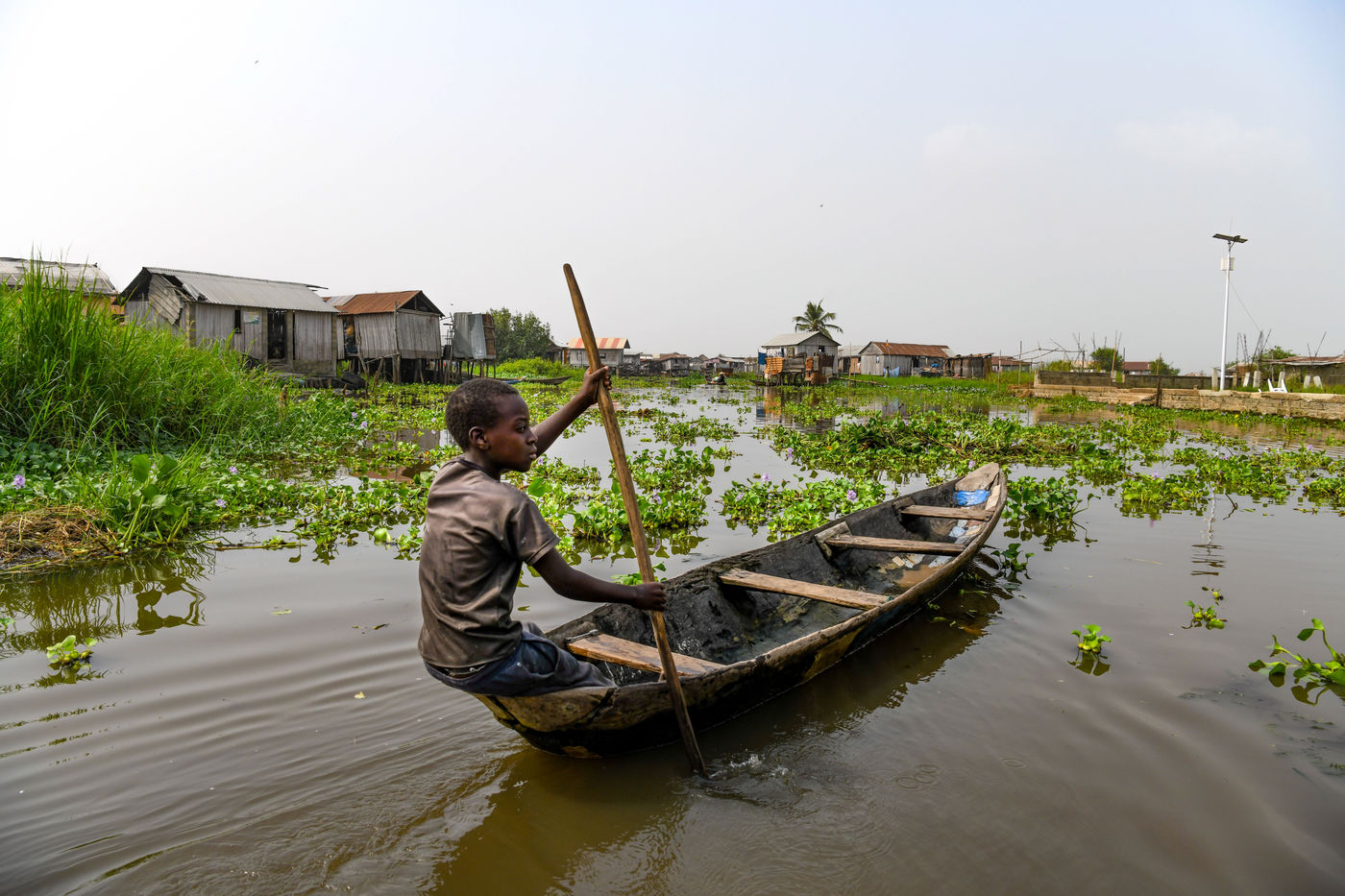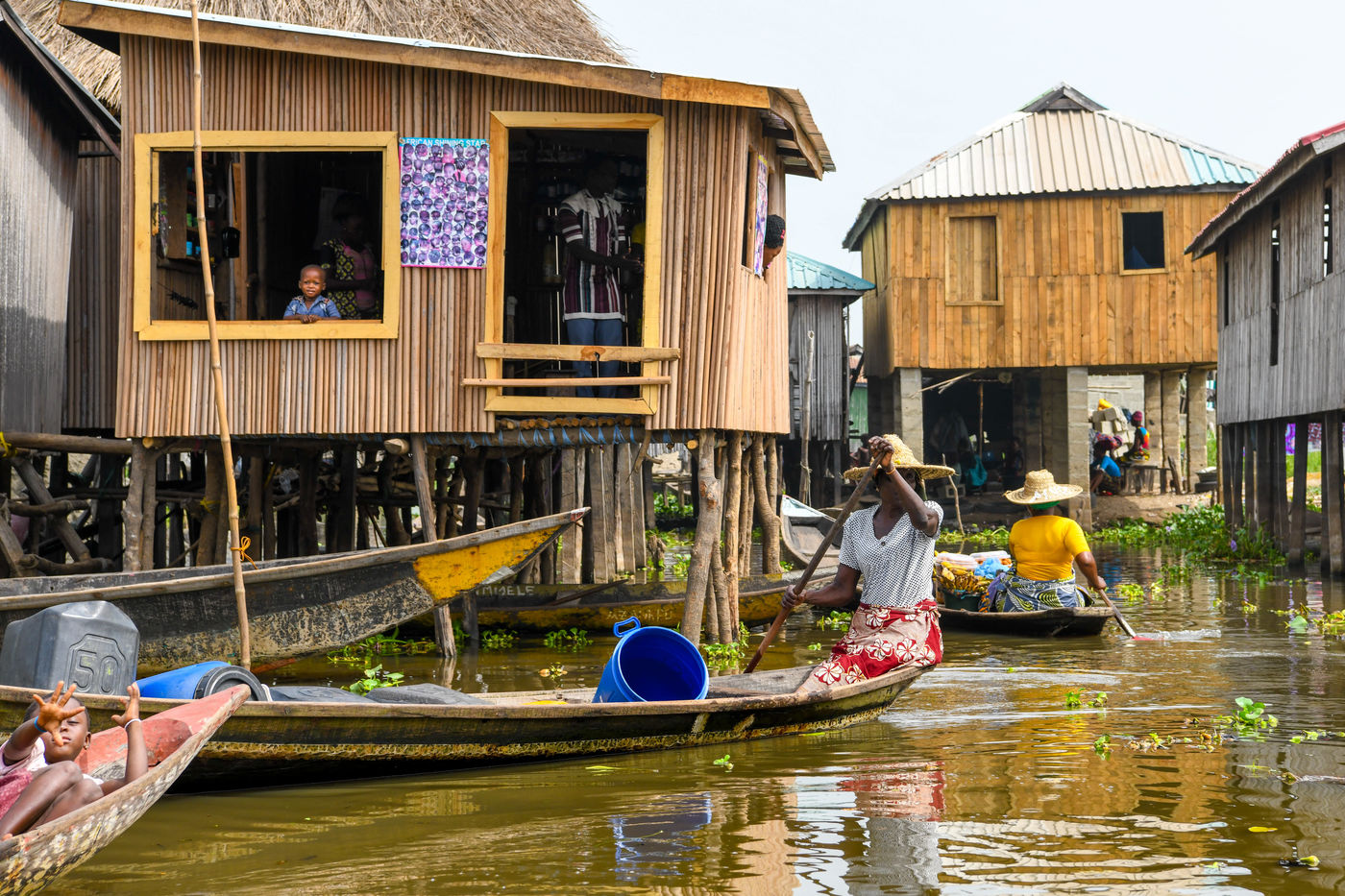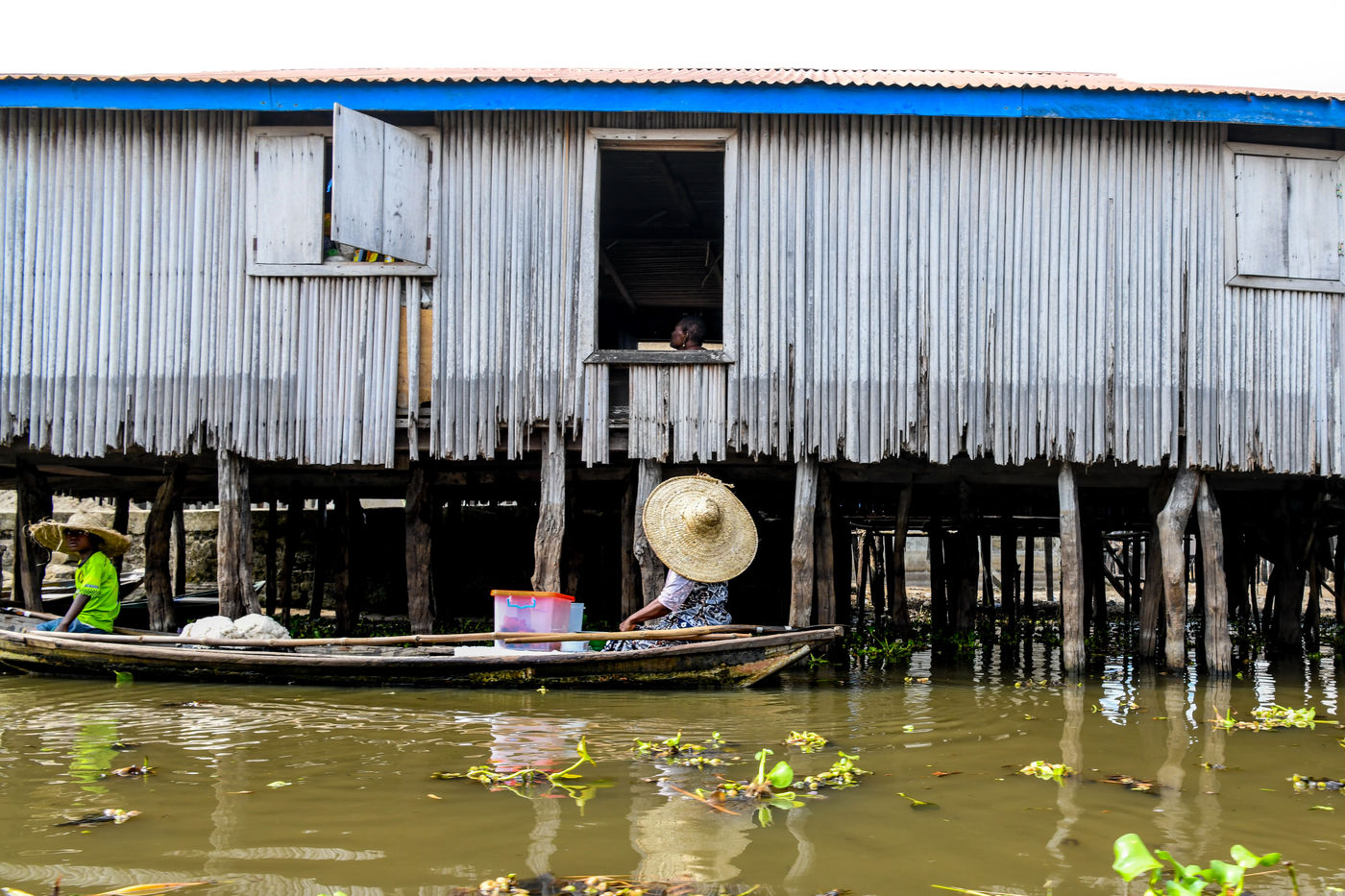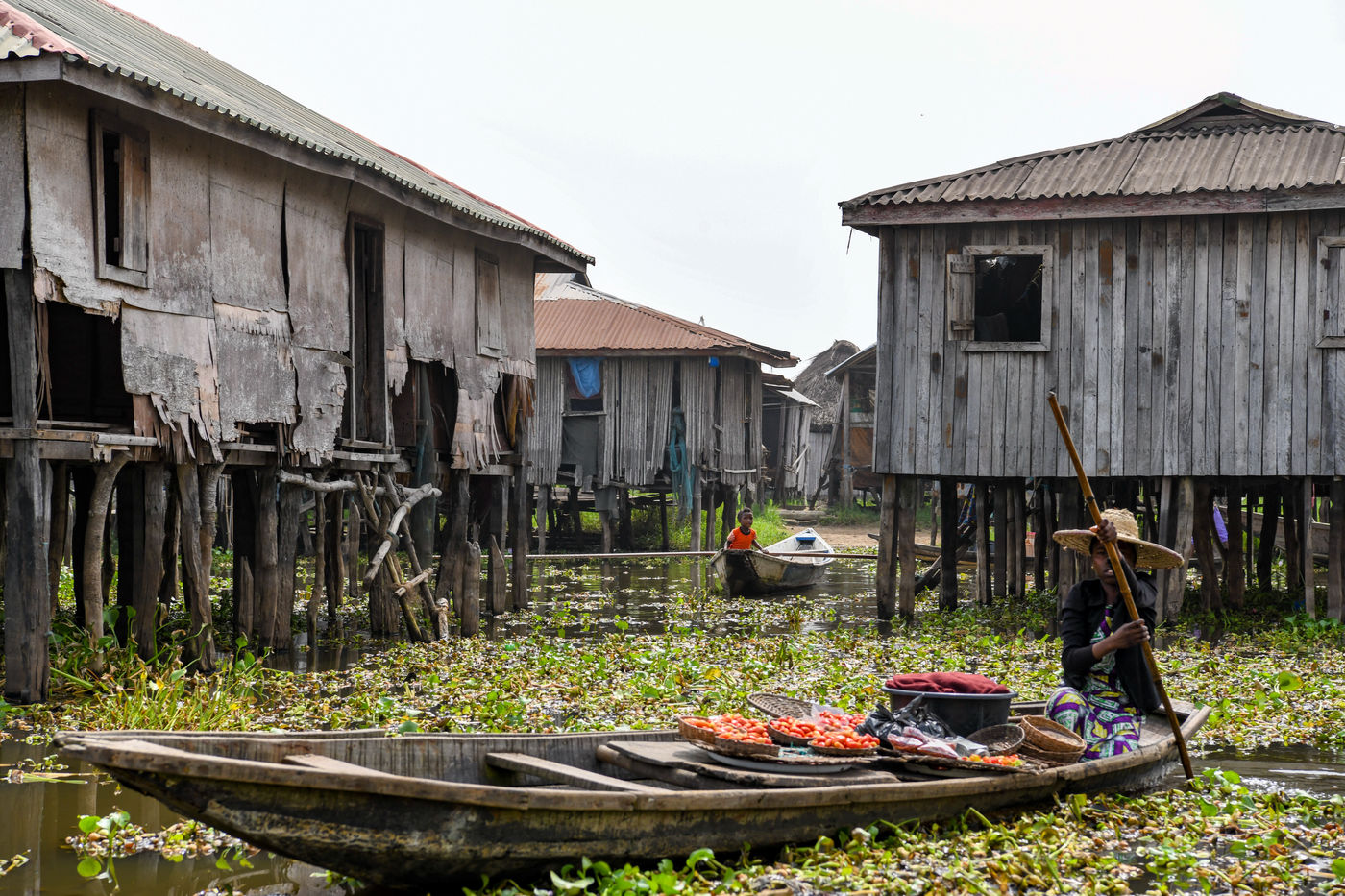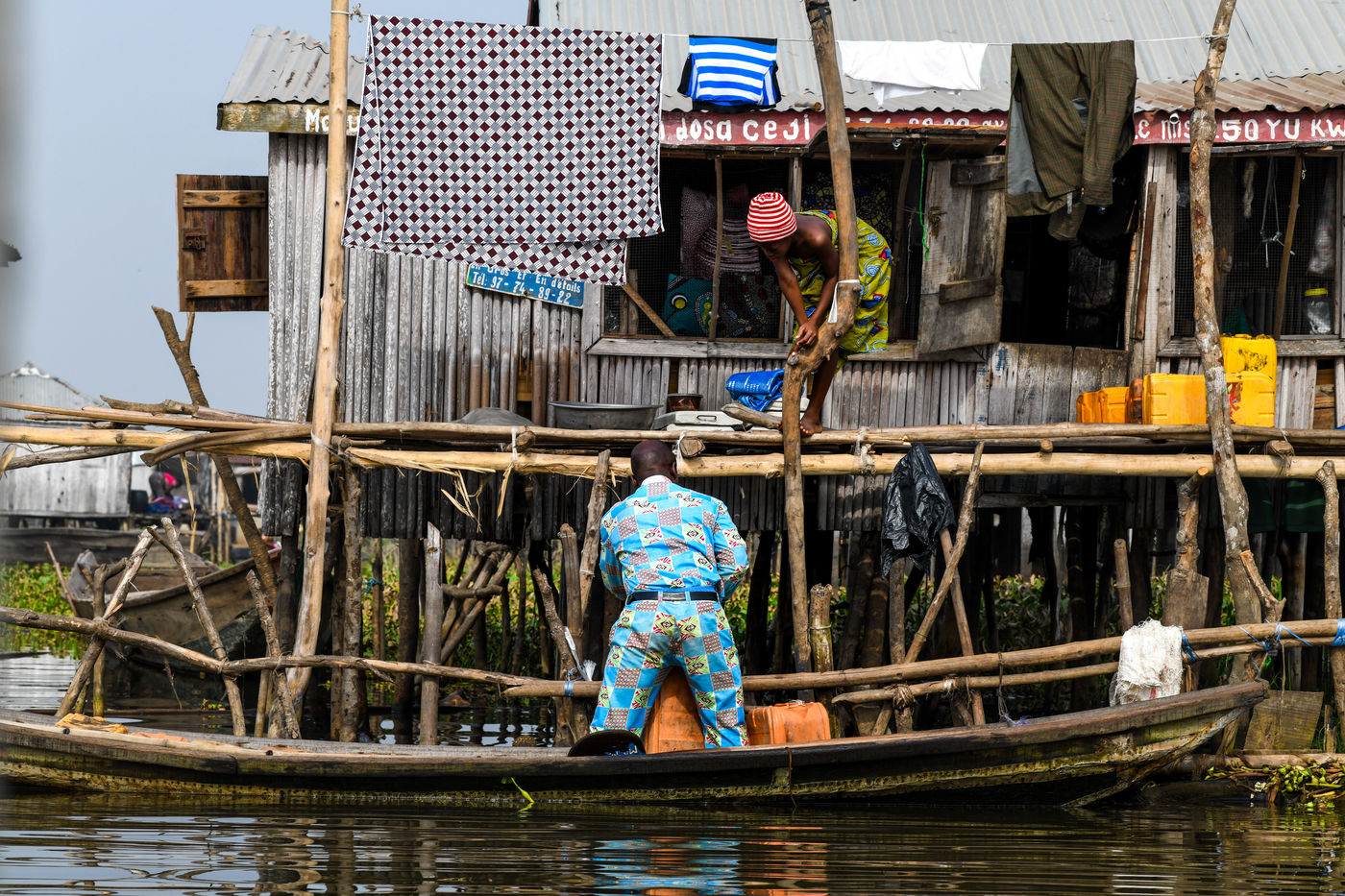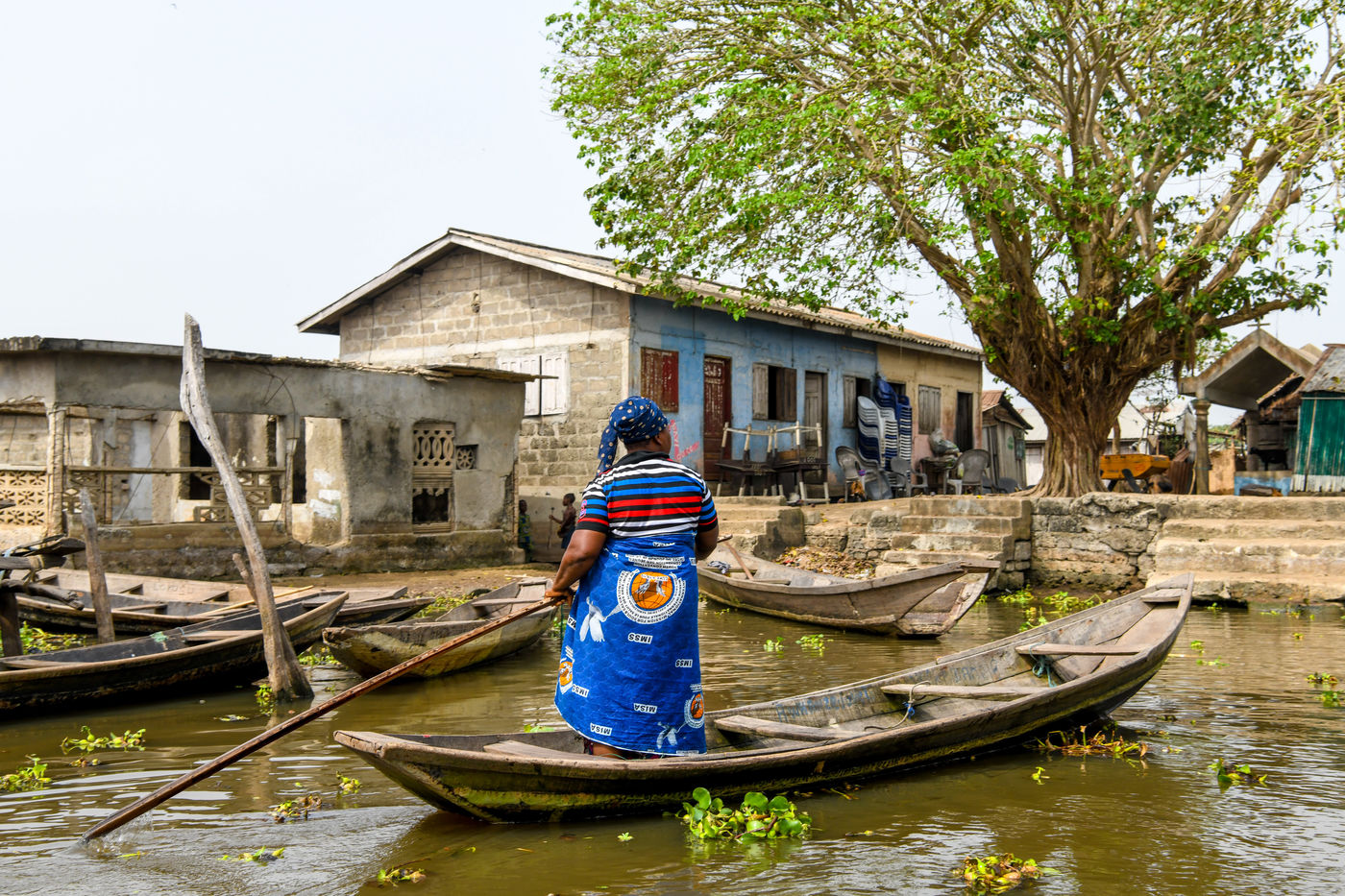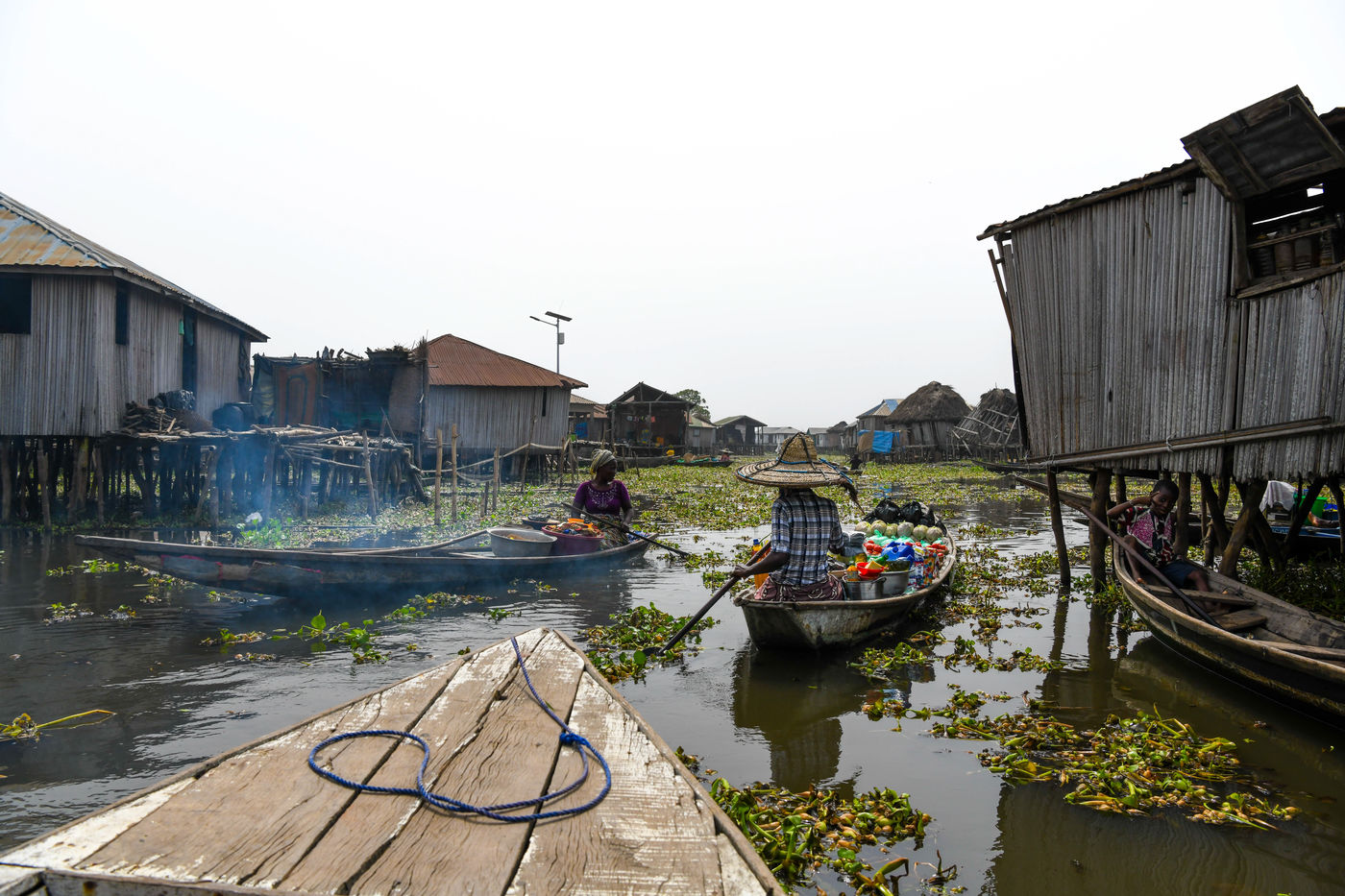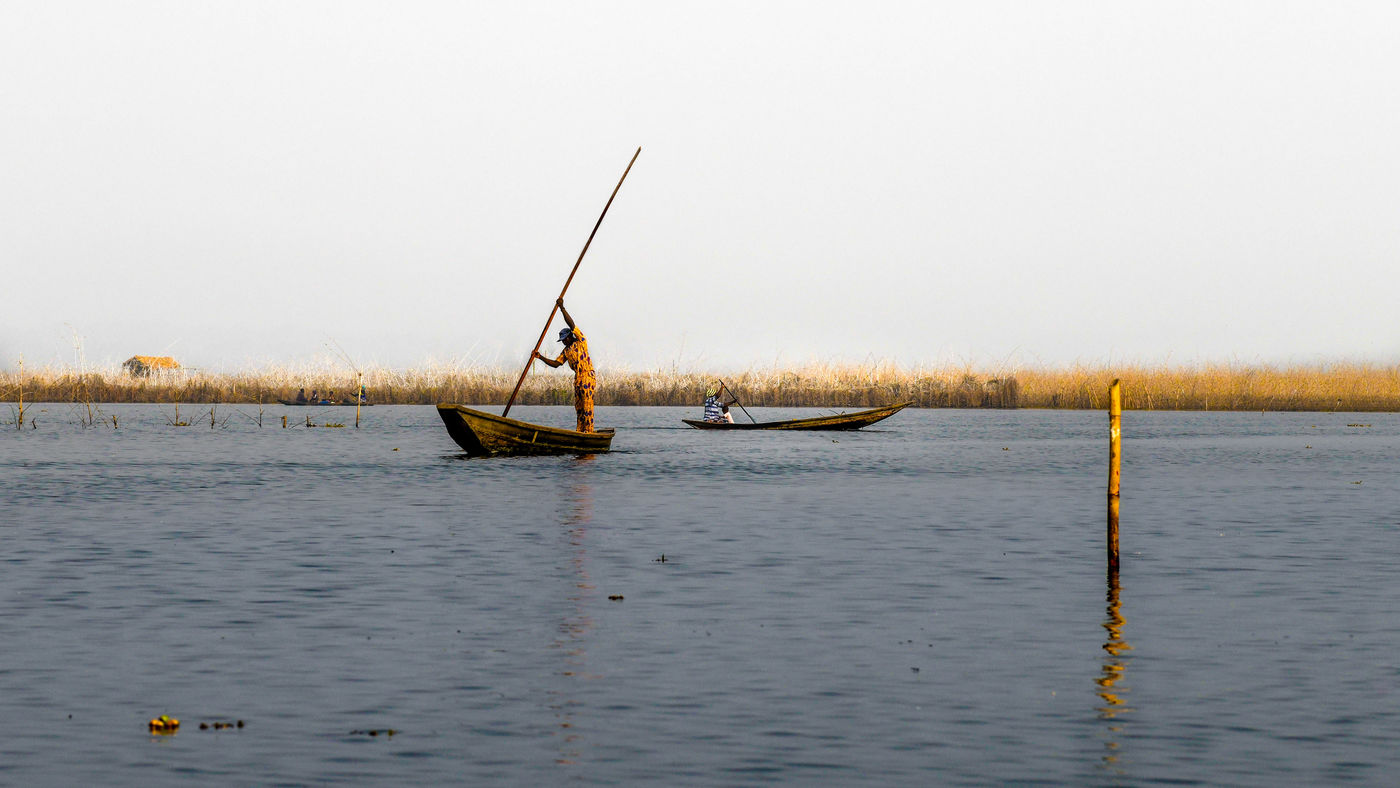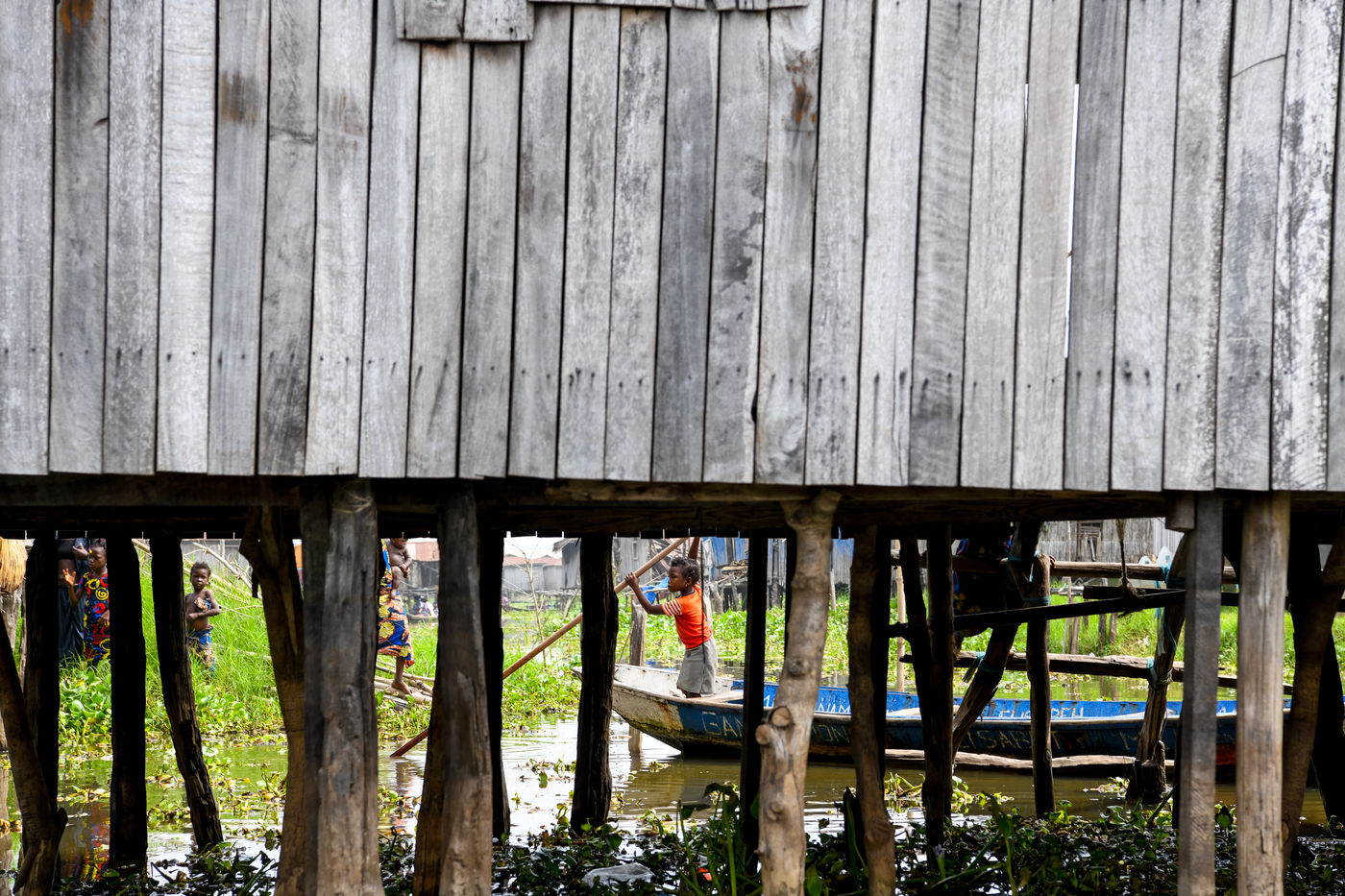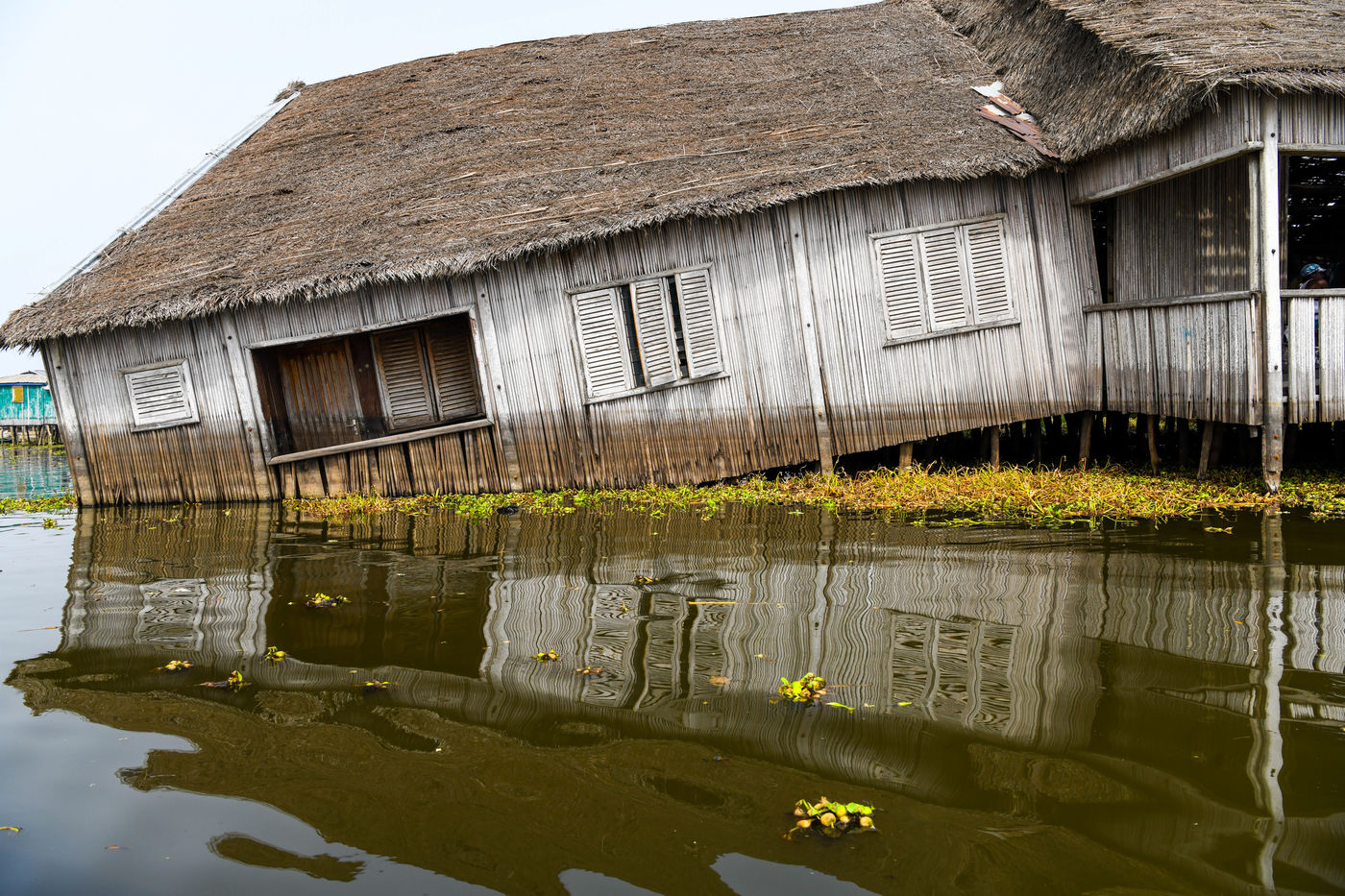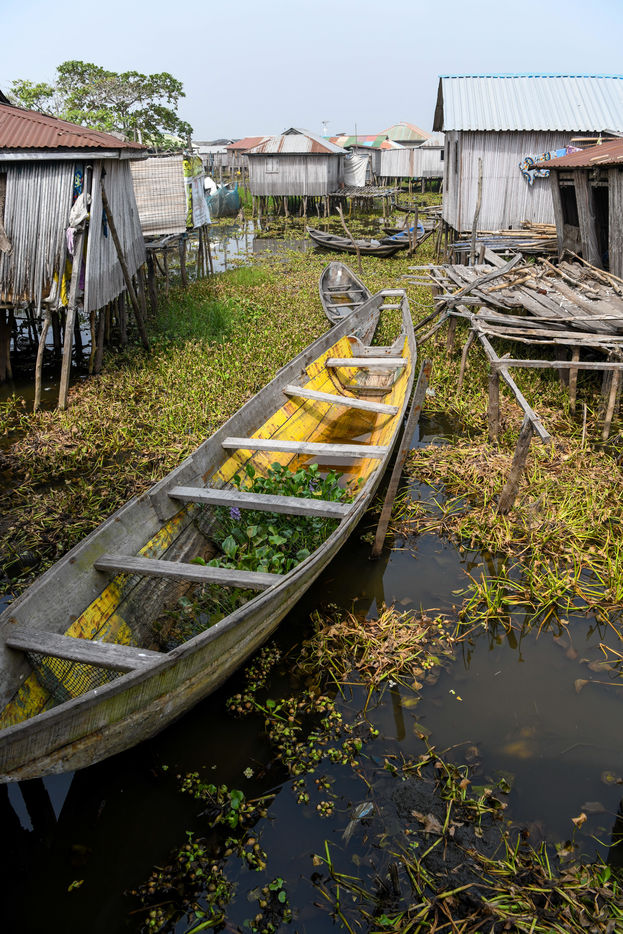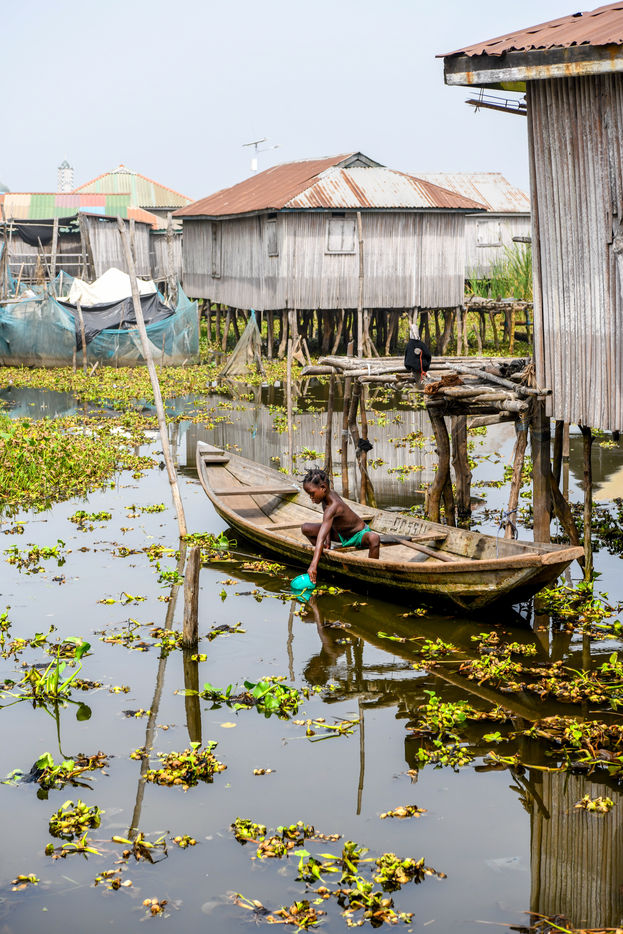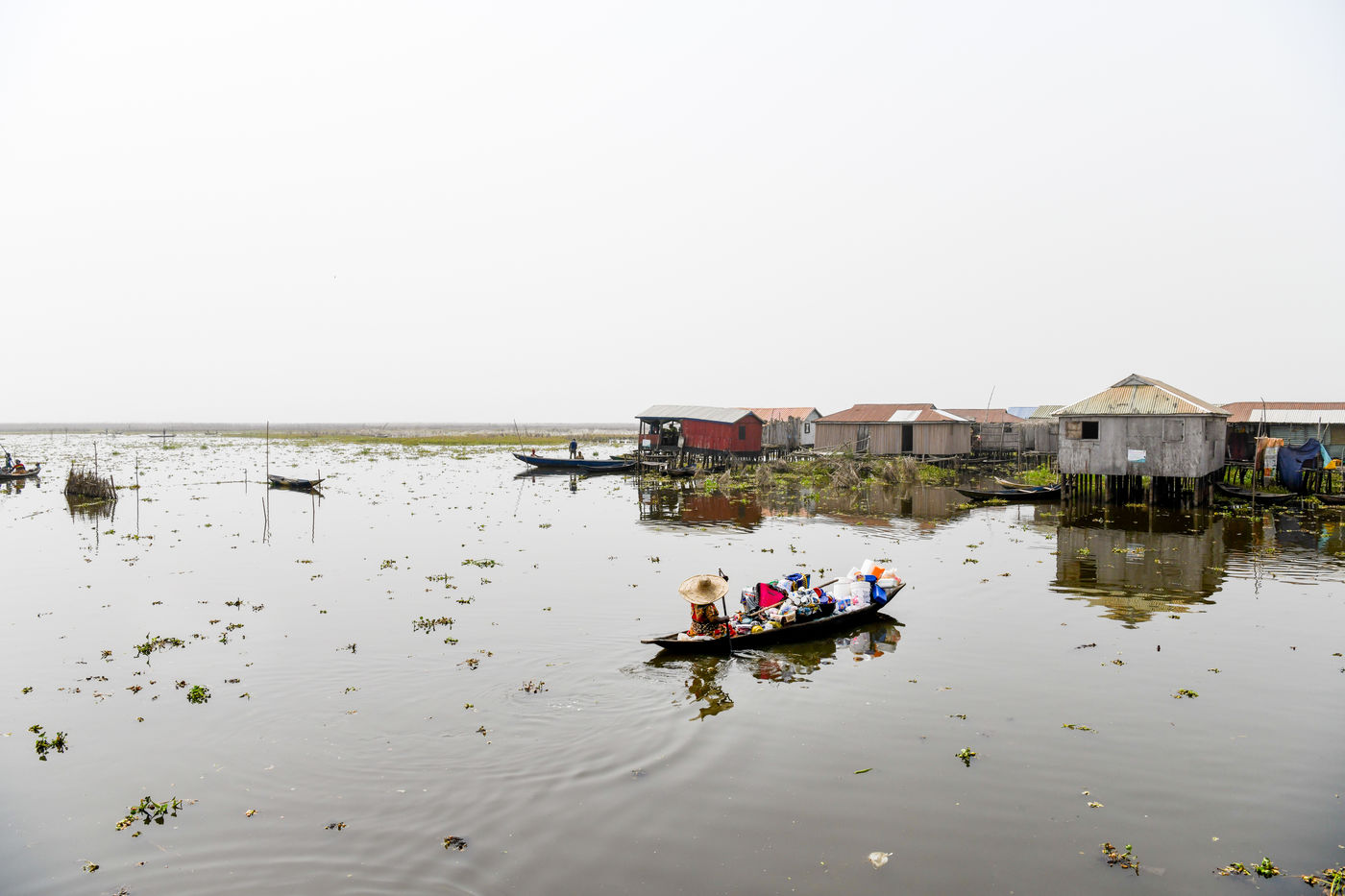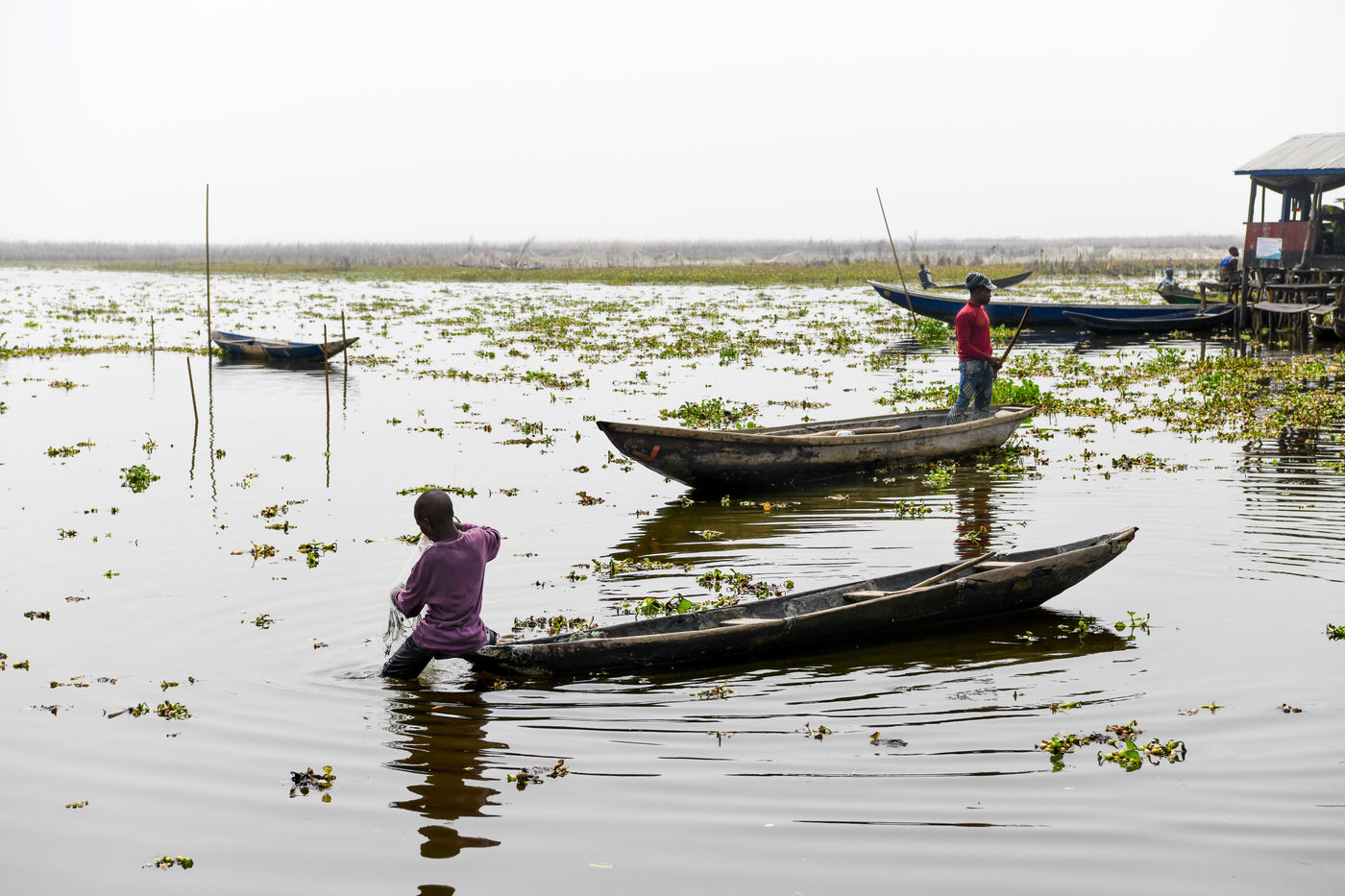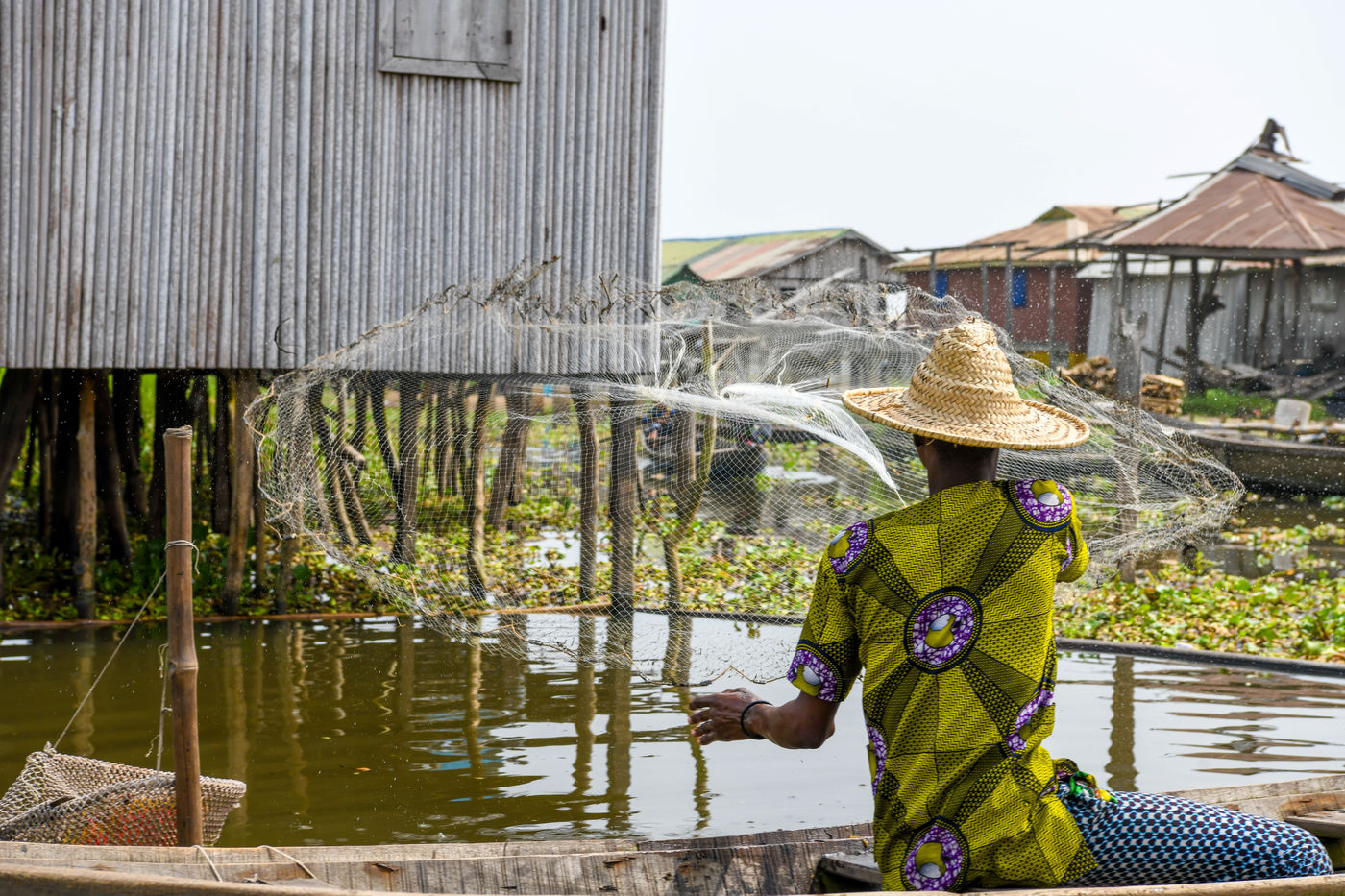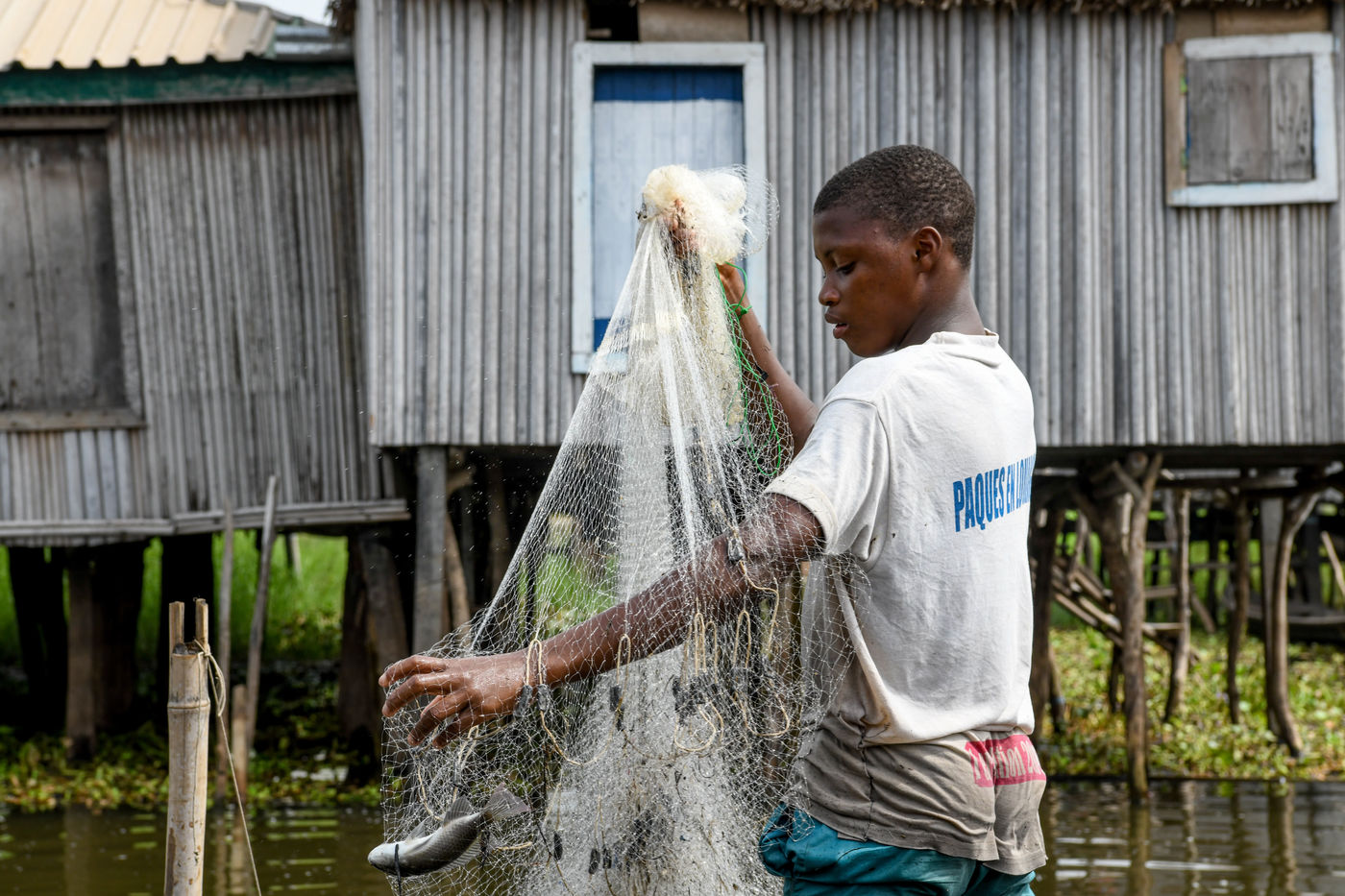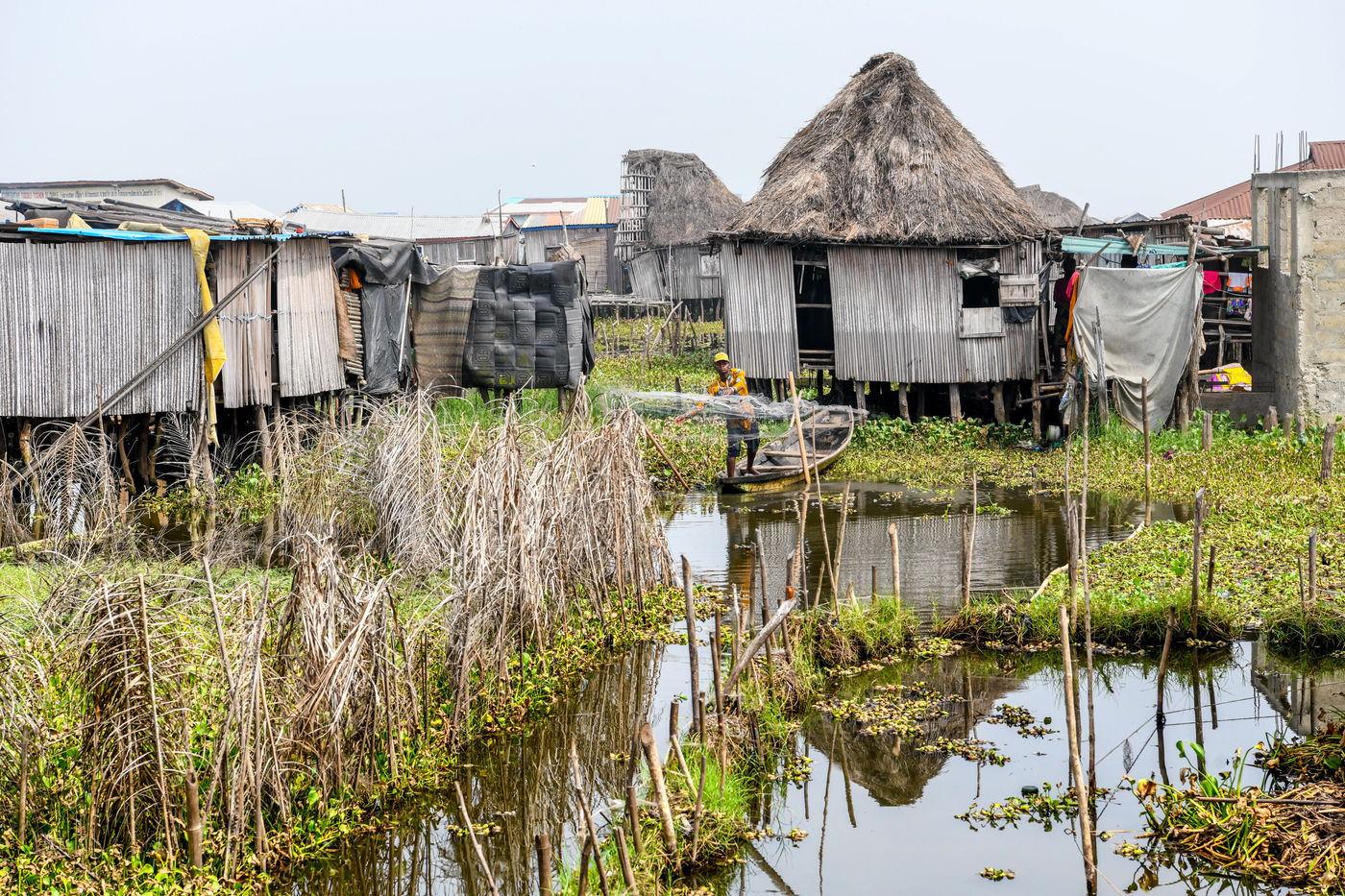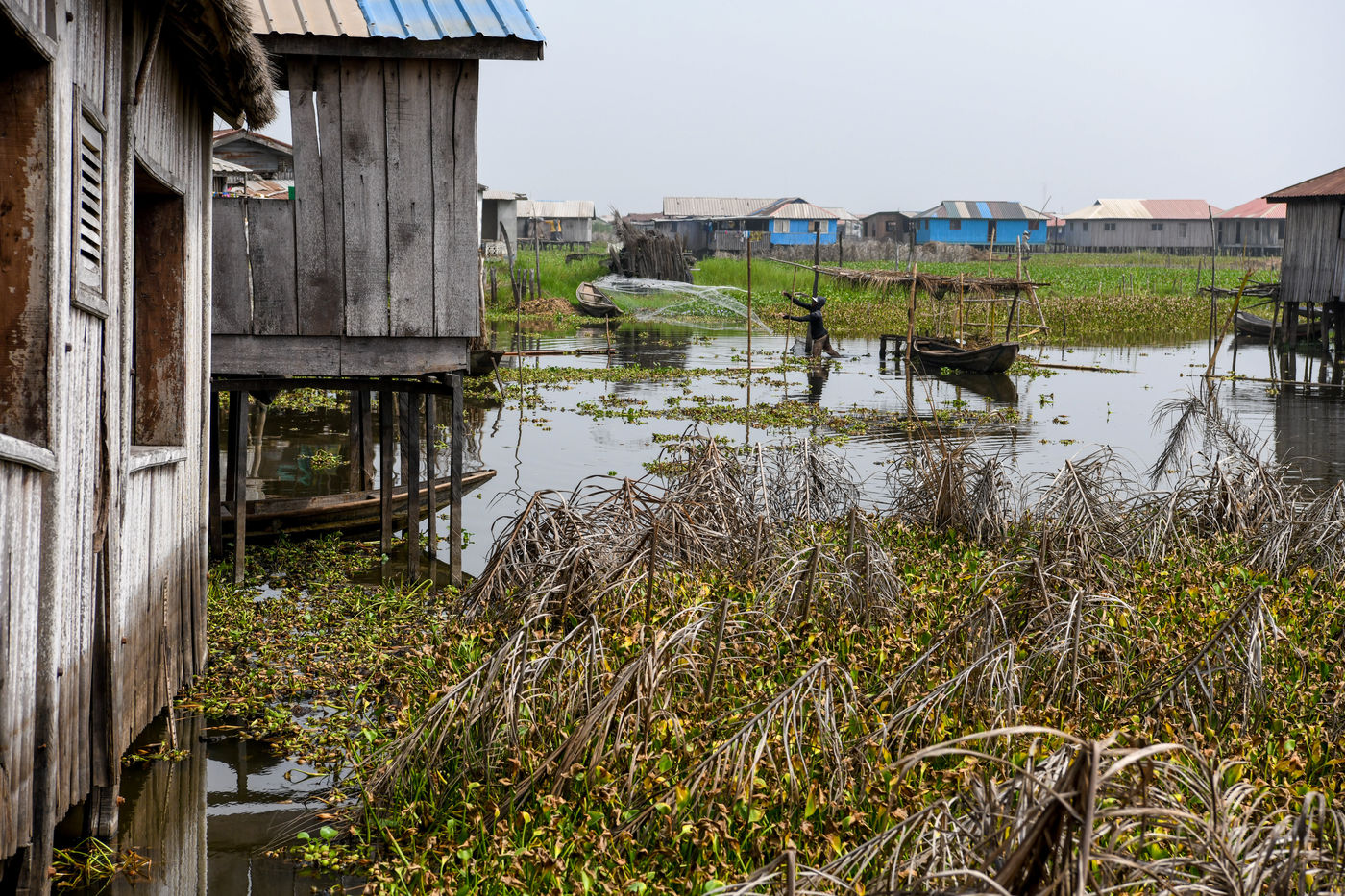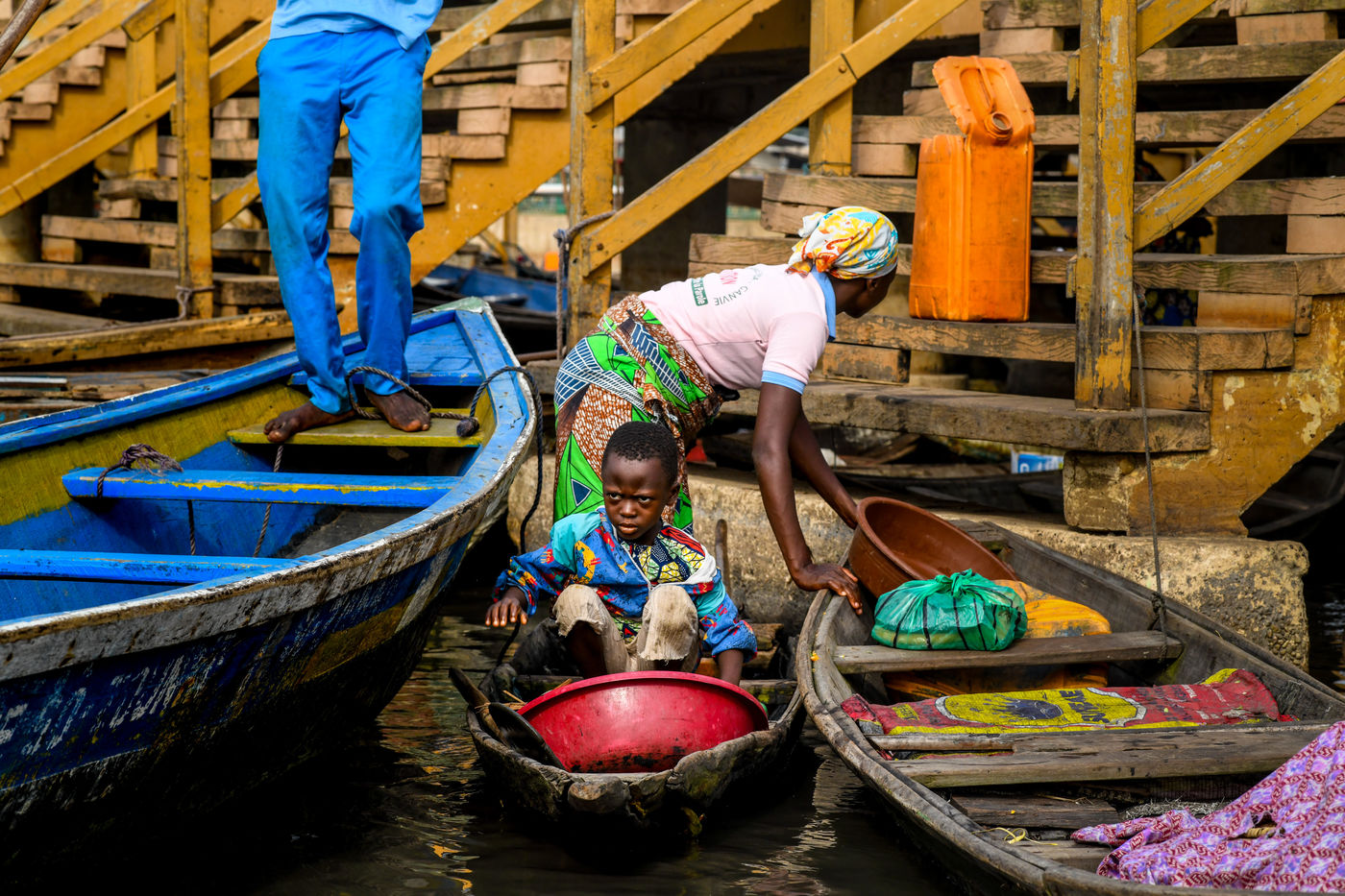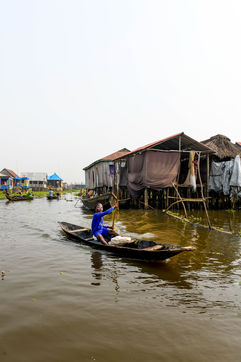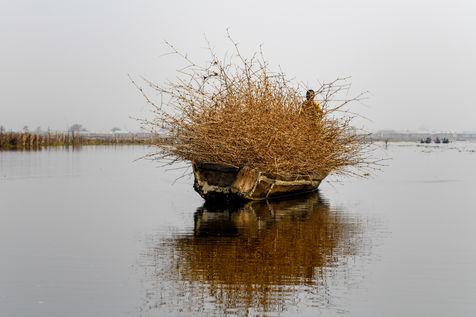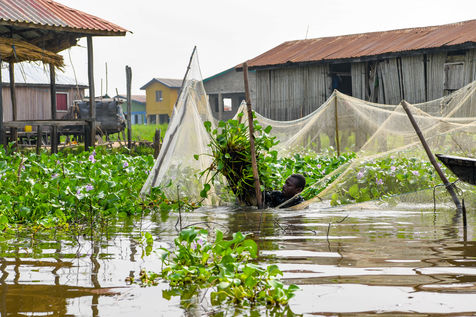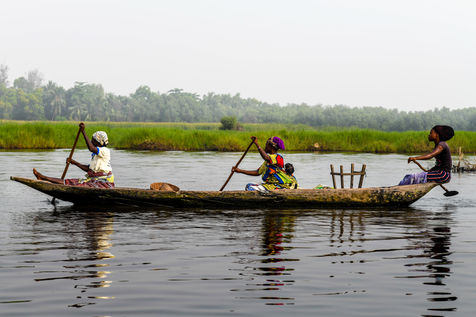Ganvié, la Venise de l'Afrique
Situé à une dizaine de kilomètres au nord de Cotonou, Ganvié est une cité lacustre du Bénin située sur le lac Nokoué.
Le village a été fondé au 18e siècle par les "hommes de l'eau" ou Toffinous, originaires du Togo (les Adjakedos) et de Tado, au sud du Bénin, venus se réfugier des raids d'esclaves dans les marécages entourant le lac.
La légende raconte que le roi Agbogdobé se transforma en épervier pour survoler la lagune et repérer l'île de Ganvié. Il se transforma alors en crocodile et son peuple, qui n'avait pas de bateau, grimpa sur son dos pour traverser le lac jusqu'à ce refuge.
Aujourd'hui, les 75 000 habitants de Ganvié vivent dans des maisons sur pilotis en bois. La pirogue reste le seul moyen de transport et il n'est pas possible de rejoindre la ville autrement.
La pêche reste l'activité principale de la région et il n'est pas rare de voir un pêcheur jeter ses filets au détour d'une rue. des pirogues chargées de marchandises viennent se croiser au marché flottant. Les habitants y vendent toutes sortes de produits et de nourriture.
Ganvié, the Venice of Africa
Located about ten kilometers north of Cotonou, Ganvié is a lakeside city in Benin located on Lake Nokoué.
The village was founded in the 18th century by the "water men" or Toffinous, originally from Togo (the Adjakedos) and Tado, in the south of Benin, who came to take refuge from the slave raids in the swamps surrounding the lake.
Legend has it that King Agbogdobé transformed himself into a hawk to fly over the lagoon and spot the island of Ganvié. He then turned into a crocodile and his people, who had no boat, climbed on his back to cross the lake to this refuge.
Today, the 75,000 inhabitants of Ganvié live in wooden houses on stilts. The pirogue remains the only means of transportation and it is not possible to reach the city otherwise.
Fishing remains the main activity of the region and it is not uncommon to see a fisherman throwing his nets at the corner of a street. Dugouts loaded with goods come to the floating market. The inhabitants sell all kinds of products and food there.

